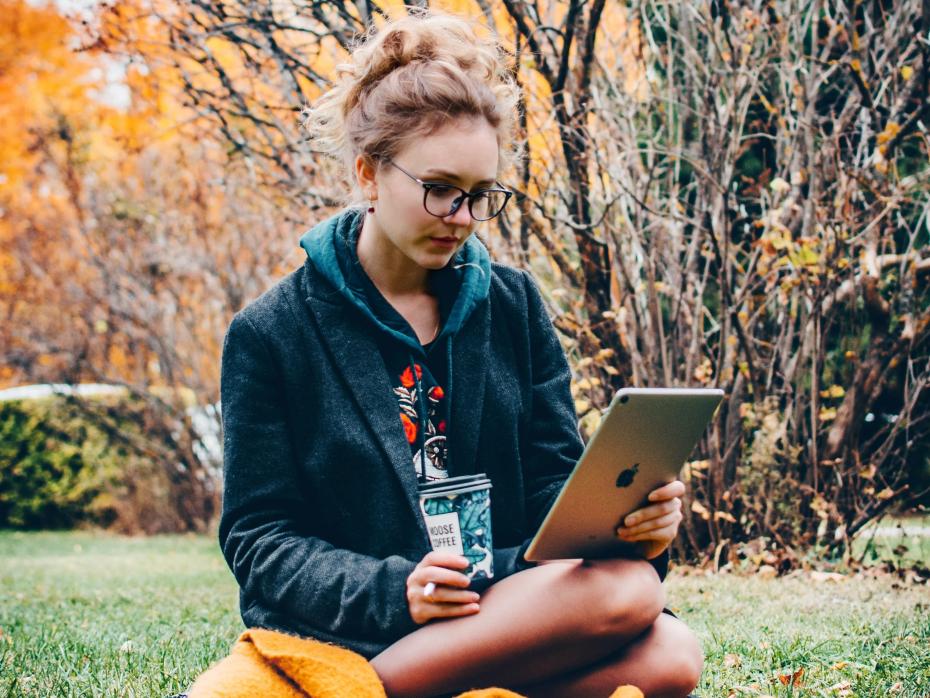
Developing an educational app to engage students in the world around them
Steps away from the mosaic that marks the tollbooth where Thomas Aikenhead was held before he became the last person executed for blasphemy in the United Kingdom, a plaque displayed in St Giles Cathedral commemorates Sophia Jex-Blake, Scotland’s first female doctor. In Edinburgh, history is literally paved into the streets and embedded into the walls, and as you pass through the city, you are surrounded by stories that have shaped Edinburgh, Scotland and the world. This is true of most cities, towns and even villages, once you start to look.
We wanted to take advantage of the rich resources in the physical spaces around us and move lessons out of the lecture hall. By using the city and its buildings, monuments, stories and place names as valuable learning tools, we could encourage students to engage with their surroundings and contextualise their knowledge.
Our solution was a website and mobile app, Curious Edinburgh, initially created to make our History of Science course more interactive by grounding the curriculum within the geography of the city. What started six years ago as a walking tour built around a known set of stories has now grown to incorporate 19 tours with plans for many more, expanding well beyond Edinburgh’s boundaries.
So how can others go about successfully developing interactive learning and engagement tools like this?
Use stories linked to place in learning
Each tour begins with a story to tell. At the start, those stories came from teaching and research connected to our department. For instance, the extinct volcano in the middle of Edinburgh was foundational to the development of geology as James Hutton observed the ancient layers in the rocks that resulted in his idea of “deep time”. Similarly, Edinburgh’s long-standing connections to Europe shaped early advancements in medicine. An app can provide a new context for the immediacy of that information, situating historical events within present spaces and showing how place matters for scientific research and its history.
Form partnerships inside and outside the university
As the app’s reputation grew, we began cultivating relationships with researchers and lecturers outside the department and community members outside the university. Colleagues developed tours focused on the city’s Jewish community and on connections between Edinburgh and India. We also worked with local cultural and community organisations: we got help from the Scottish Brewing Archive for our History of Brewing tour, and our tour on the History of Charity and Civic Action was part of the 150th anniversary of the Edinburgh Association for Improving the Condition of the Poor. These local collaborations expanded our own knowledge of the city and what we could bring to students and other users.
Craft accessible and informative narratives
For every tour, we spend considerable time with our partners developing strong, accessible narratives. This means dedicating time to editing and shaping the stories of each stop to ensure that they are clear, concise and cohesive, with one focused story per stop that complements, but is not dependent upon, any of the others. Key to this process is the tour template we developed with specific guidelines for story structure, image details, location data and other ancillary information. Using the template helps everyone involved in a tour stay on the same page – literally.
Draw on your institution’s tech expertise
Having good technical expertise is crucial for development and maintenance. In our case, the technical side of the app would not have been possible without close collaboration with the university’s tech wizards, EDINA, and learning, teaching and web services. Keep in mind that developing an app is one thing, but maintaining and expanding it means continuous investment in and adjustment of the infrastructure in tandem with the content development. For instance, at the moment we are making the app compatible with new regulations for accessibility.
Using the app as a learning tool
Students engage with the app’s content multiple ways. As learners, the app is a complementary tool that encourages independent learning by allowing students to encounter course content outside the classroom on their own schedule and at their own pace. As creators, students have used the app platform as a way to develop their own science communication and public engagement abilities. Several university courses have incorporated creating tour stops into their curricula, inviting students to develop critical thinking and practical skills around producing content for different audiences. The tours are one of the digital backbones of a new course on the city of Edinburgh developed by the Edinburgh Future Institute.
Using a teaching tool like this to engage wider audiences
The audience for Curious Edinburgh tours has grown beyond the classroom. We are the most-used app from the University of Edinburgh, and through the development of new walking tours we are able to connect users to the ways and places current global issues are playing out locally. Moreover, by working with local community groups, activist networks and concerned citizens, the app becomes a tool to help make their stories and causes visible to a larger audience.
Link with current affairs and issue
A recent Public Health tour, launched in collaboration with Edinburgh Medical School, tells the story of the Usher Institute public health department and connects Edinburgh’s medical past with the current health responses in both Scotland and the UK, providing another perspective on the pandemic. The debates around decolonisation of the university led by UncoverED and the presence of the global Black Lives Matter movement in the city were the focus of two tours in 2020, and climate change, specifically the challenges for Scottish coastal communities, is the focus of a new series of Curious Coastline walks we hope to develop soon.
By telling new stories about known places, Curious Edinburgh is a source of learning – not only for those using the tours, but also for those developing the platform. Maintaining the app and finding continued financial support has proved one of the biggest challenges, and we are extremely grateful for the diversity of people and funding sources supporting us over the past six years and for the Tam Dalyell Prize for Excellence in Public Engagement we won in 2017.
It has been incredibly gratifying to watch the app grow as a tool for students and the public, and we look forward to continuing to develop and share new histories. So visit our website, take a tour or, if you’re in Edinburgh, open up the app. You never know what stories may have happened right where you’re standing.
Kate Bowell is a PhD student and Niki Vermeulen is a senior lecturer in the history and sociology of science, both at the University of Edinburgh.




